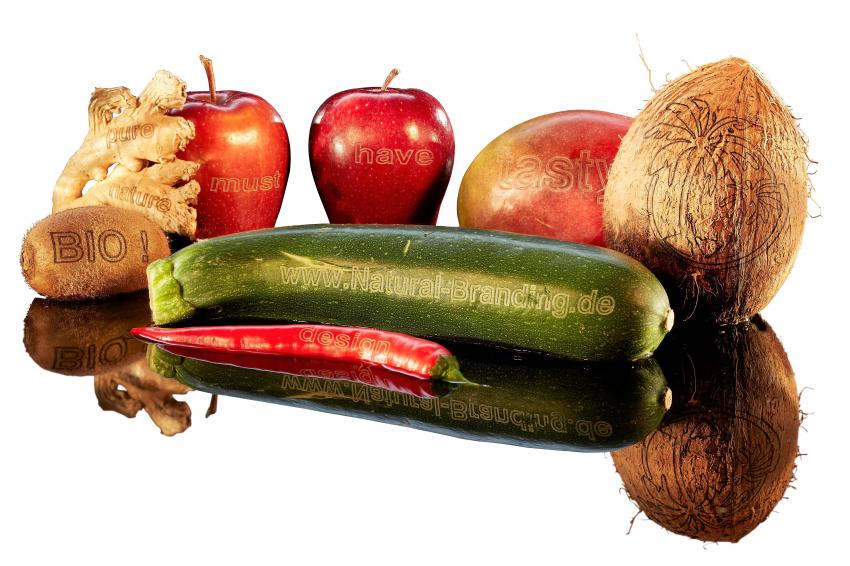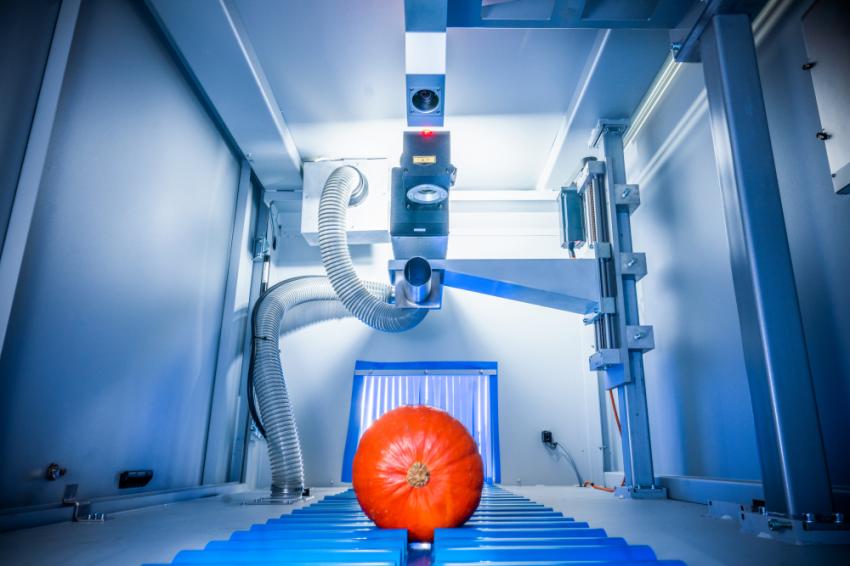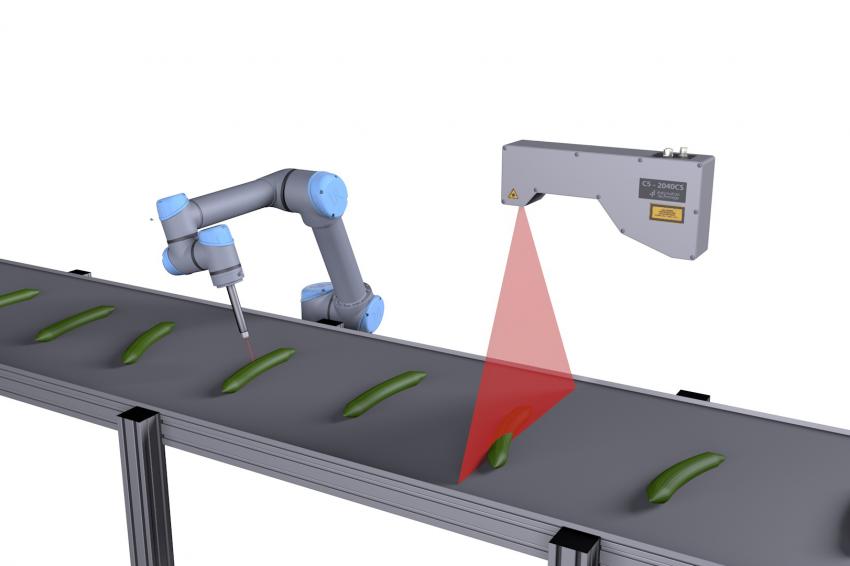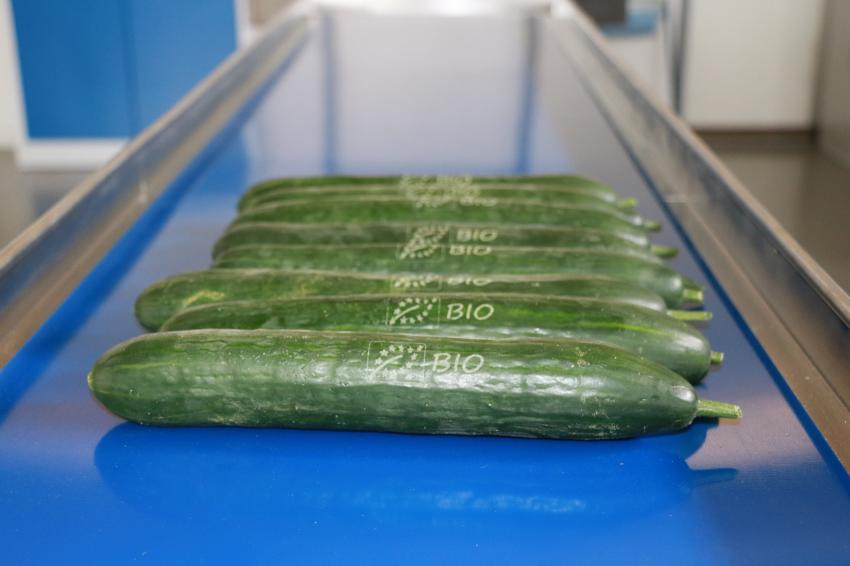Why pack when you can laser?
3D sensors in food branding application
The company Ecomark specializes, among other things, in labeling food directly on the tray via laser marking. On the one hand, to produce less plastic and packaging in the future, but on the other hand also to provide an effective process under the aspect of sustainability and environmental friendliness, which at the same time is also demonstrably economical. However, food branding required a great deal of technical know-how right from the start, as there were several important details to consider when labeling food.
Technical requirements for the 3D application for food branding
To be able to position the marking laser individually for each product and thus guarantee a one hundred percent hit rate for the marking of the groceries, an individual application was required. With the help of a 3D sensor, this application had to be able to determine the position of the fruit and vegetables on the conveyor belt. The challenge was to develop a 3D scan solution that is precise, fast and also sends reliable data to the marking laser despite changing measurement widths and different positions of the fruit and vegetables. Automation Technology's solution: a product from the C5-2040CS sensor family. The 2040 sensors combine speed and accuracy, and also allow a measuring width of up to one meter with a resolution of 2,048 measuring points. Furthermore, they are almost maintenance-free and require hardly any support, as they are already factory-calibrated and can be easily integrated into any existing system via Plug&Play using their GigE Vision interface without much installation effort.
"Ecomark is a perfect example of the unique diversity of AT's 300+ sensor variants. Based on the customer's technical data, we were able to deliver the right 3D sensor to meet their exact requirements," explains Michael Wandelt, CEO of Automation Technology.
Food branding is significantly more economical than packaging
However, in addition to the convincing technology of the food branding application, the focus is also on the cost-effectiveness of this process optimization. "We are very optimistic that the trend of food labeling directly on the tray will become established in the future. Ultimately, this method is significantly cheaper than previous plastic solutions, as packaging costs are eliminated. We only incurred costs at the beginning of production due to the purchase of the labeling system, further follow-up costs are very low," says Richard Neuhoff, CEO of Ecomark.
Even before the company developed machines for food branding, the company was already specialized in laser machines for marking any material. Due to years of expertise in this area, the idea of so-called natural branding was born in 2018, with which the company was able to attract global attention. Ecomark is now one of the largest international providers of food and natural branding. In general, their labeling machine marks up to 100,000 fruit products per hour, depending on the thickness of the tray and the nature of the variety. "Each fruit and vegetable product has a different size and, of course, a different peel, so we always have to be careful to find the best compromise between the visibility of the marking and the shelf life of the product. If the laser were set incorrectly, for example, the peel would be destroyed in the process, so you have to know very well what you are doing," Neuhoff continues.
3D application with future
For the application that Ecomark has developed with the AT sensors, it is again irrelevant whether a kiwi or a cucumber is lying on the conveyor belt. The 3D sensor scans the fruit and vegetables flexibly and creates a 3D point cloud for each product within milliseconds, according to which the marking laser is then aligned. To present date, AT has already supplied 15 C5-2040CS sensors for the food branding application, with further sensors for other industries in the pipeline, as they have been in continuous use since first being integrated into the labeling system when flexibility and productivity are required.
Author
Nina Claaßen, Marketing Manager
Contact
AT - Automation Technology GmbH
Hermann-Bössow-Str. 6-8
23843 Bad Oldesloe
Germany
+49 4531 88011 0
+49 4531 88011 20










